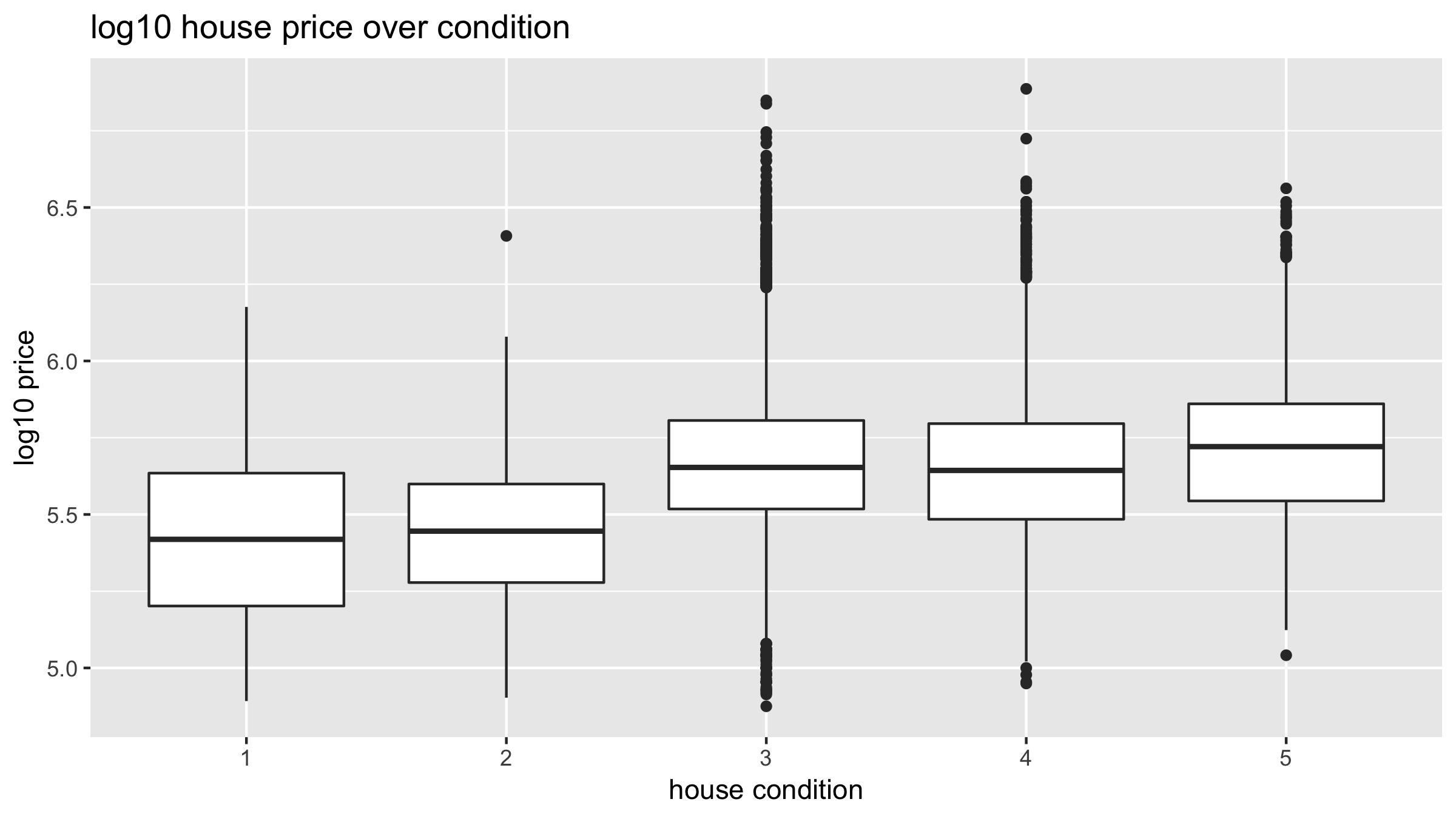The modeling problem for prediction
Modeling with Data in the Tidyverse

Albert Y. Kim
Assistant Professor of Statistical and Data Sciences
Modeling problem
Consider $y = f(\vec{x}) + \epsilon$.
- $f()$ and $\epsilon$ are unknown
- $n$ observations of $y$ and $\vec{x}$ are known/given in the data
- Goal: Fit a model $\hat{f}()$ that approximates $f()$ while ignoring $\epsilon$
- Goal restated: Separate the signal from the noise
- Can then generate fitted/predicted values $\hat{y} = \hat{f}(\vec{x})$
Difference between explanation and prediction
Key difference in modeling goals:
- Explanation: We care about the form of $\hat{f}()$, in particular any values quantifying relationships between $y$ and $\vec{x}$
- Prediction: We don't care so much about the form of $\hat{f}()$, only that it yields "good" predictions $\hat{y}$ of $y$ based on $\vec{x}$
Condition of house
house_prices %>%
select(log10_price, condition) %>%
glimpse()
Observations: 21,613
Variables: 2
$ log10_price <dbl> 5.346157, 5.730782, 5.255273...
$ condition <fct> 3, 3, 3, 5, 3, 3, 3, 3, 3, 3, 3...
Exploratory data visualization: boxplot
library(ggplot2) library(dplyr) library(moderndive) # Apply log10-transformation to outcome variable house_prices <- house_prices %>% mutate(log10_price = log10(price))# Boxplot ggplot(house_prices, aes(x = condition, y = log10_price)) + geom_boxplot() + labs(x = "house condition", y = "log10 price", title = "log10 house price over condition")
Exploratory data visualization: boxplot

Exploratory data summaries
house_prices %>%
group_by(condition) %>%
summarize(mean = mean(log10_price),
sd = sd(log10_price), n = n())
# A tibble: 5 x 4
condition mean sd n
<fct> <dbl> <dbl> <int>
1 1 5.42 0.293 30
2 2 5.45 0.233 172
3 3 5.67 0.224 14031
4 4 5.65 0.228 5679
5 5 5.71 0.244 1701
Exploratory data summaries
# Prediction for new house with condition 4 in dollars
10^(5.65)
446683.6
Let's practice!
Modeling with Data in the Tidyverse

